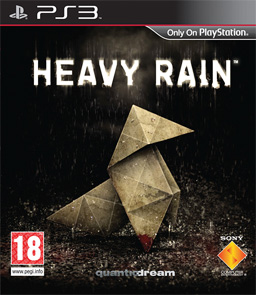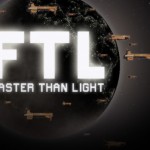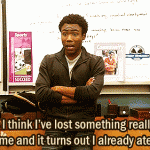Retrovued: Heavy Rain

After taking a look at the trailer for Beyond: Two Souls in last week’s trailer watch I got to thinking about David Cage and his studio Quantic Dream’s other projects. The studio itself is far from prolific, in fact, they have produced just one game for each console generation since the studio was founded in 1997.
Their first offering was Omikron: The Nomad Soul. Released for PC in 1999 the game got mixed reviews at best; not least because the game switched from one completely different style of game play to the other at the drop of a hat. The game was not without merit however and got a release on the Dreamcast in 2000. After several years in production limbo, plans for a sequel were quietly dropped as the studio took on a tangent in films, producing CGI sequences for French film Immortal in 2004 before it found its feet in the interactive narrative that was Farenheit (Indigo Prophecy for any Americans in the room.)
Why does the history of Quantic Dream as a studio matter when talking about Heavy Rain? The answer is simple; Heavy Rain is quite possibly the finest example of interactive story telling ever created. If it weren’t for their experiments with narrative in Farenheit, their disappointing first game and their brief foray into cinema I don’t think it would be half the accomplishment it is. Quite frankly if you own or even have access to a Playstation 3 you should have played it already.
The plot is straight out of a Raymond Chandler or James Ellroy novel; a murderer who abducts and then kills children is on the loose, The Origami Killer, so called because of his distinctive calling card. You take on the role of four different characters, each involved in his most recent abduction. Ethan Mars, the father of the missing child; Scott Shelby, a private detective hoping to catch the killer to bring closure to the families of his victims; Norman Jayden, an FBI profiler in the vein of Fox Mulder and Will Graham and Madison Paige, a photojournalist hoping to catch the killer and raise her profile. What follows is a grand experiment in the nature of interactive storytelling, where your successes and failures have a direct impact on the overall story and, in some scenes, a messy end for one or more of the four main characters – if that happens, the game just continues but some scenes are just skipped.
It’s a brave move for a game to introduce you to four characters and even if you fail completely not see a game over. Heavy Rain has seven distinct endings, based on who lives and who dies and when; but in reality it’s a game best played through once and being left right there. The story of the Origami Killer is flexible and therein lies the greatness of Heavy Rain. The story feels organic, like it was written specifically for you.
That’s not to say that the game is perfect. In many ways the game is far from it: the game-play is one long sequence of quick time events – logical ones that fit well with the action on screen but quick time events none the less; this feels really like a secondary concern though as the star of the show is the writing and the characters. The game-play serves as a means to drive the narrative forward, when the game-play is good it’s great: the first time you get into a fight in the game and the screen becomes a sequence of frenetic button presses, the game does a good job of justifying the unusual design choices.
As I have already said the writing in this game is just fantastic if I were to offer one criticism of it it would be that the messages embedded in each characters story feel heavy handed at times (Norman Jayden’s addiction to a drug that allows him to interact with near future virtual reality for instance) but you never stay with one character long enough to feel bogged down by it.
The game is also visually stunning and is one of the first games I can think of where the acting really mattered. Everything you see on screen was carefully choreographed, nothing is a canned animation and there isn’t a rag-doll anywhere in sight. Each of the three leading men were voiced by the actors who did their motion capture (which I believe was a first for games at the time) and the leading woman was the only major player to use one actor for the motion and another for the voice.
The game itself is also full of neat little touches, the game requires installation and as such when you first put the disc into the drive you are informed you have a bit of a wait ahead of you, but don’t get bored. The developers were aware this may be an issue and so they provided you with installation entertainment in the form of a square of paper, as the installation progresses instructions flash up on screen to show you how to make your very own origami swan.
I feel like I’m meandering from my point a little. Heavy Rain isn’t really a game in the sense many would think of. You use a controller and you affect the story but this is more like a choose your own film than anything else. It’s telling that Quantic Dream’s first game was a bit of a mess and it was only after working on a film that they found their stride. This isn’t a game you should play because it’s great (it is by the way) it’s a game you should play because it matters.
Heavy Rain has had as much influence on narrative and structure in games as Super Mario 64 did on 3D platformers, and Ocarina of Time did on RPGs. Is Heavy Rain as good as those games? No, in fairness. But it is a game that you have missed out on if you haven’t already played it.









